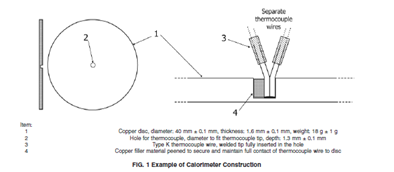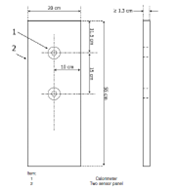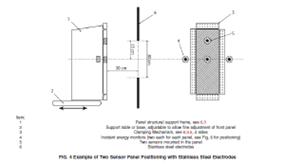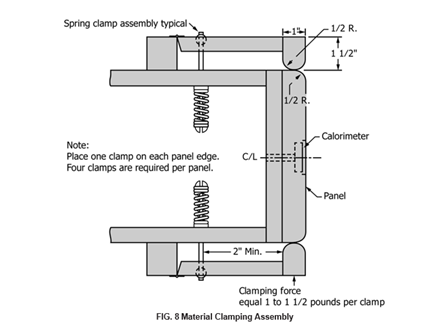- Ablation, n-in arc testing, a physical response evidenced by significant erosion or the formation of one or more large holes in a layer of a multilayer system.
- Eab: The incident energy in a multilayer system that results in a 50% probability of the physical ablation response.
- The arc index is expressed in cal/cm2 and is derived from the determined ATPV or EBT value (in the case where a material system has a fracture response below the ATPV value) or the nominal arc limit. It can be expressed in ATPV, EBT or ARLim.
- ATPV: Incident energy in a material or a multilayer system of materials that results in a 50% probability that sufficient heat transfer is expected through the sample under test to cause the occurrence of a second-degree skin burn according to the Stoll curve5, kJ/m2 [cal/cm2].
- The sample is considered to be fractured when a hole is at least 1.6 cm2 [0.5 in2] or at least 2.5 cm [1.0 in2] in size.] in any dimension. In multilayer samples of fire-resistant materials, all layers must be broken to meet the definition.
- EBT: The incident energy in a material or system of materials that results in a 50% probability of opening, J/cm2 (cal/cm2).
- ARLim: The arc rating indicates the maximum thermal energy protection that has been assigned to the product according to the manufacturer’s specifications after verification by testing or detection limits of the analytical method. The value assigned from the dataset of all samples will be less than the Stoll curve and without breaking.
- Heat flux, n: the thermal intensity indicated by the amount of energy transmitted divided by the surface area and time kW/m2 [cal ⁄cm2s].
- Incident energy (Ei), n: total thermal energy received at the surface of the panel as a direct result of an electric arc.
- Stoll curve5: An empirical model of second-degree skin burns, also known as the Stoll response.
- Nominal Weight: Theoretical Weight (g/m2)
- Current weight: Sample weight before washing and after conditioning according to D1776/D1776M (g/m2)
- Weight tested: Test weight of the sample used to generate the arc index (g/m2)
- Target arc weight: Measured weight for a specific sample expressed in g/m2 used to generate the arc classification according to F1959/F1959M
- Mixed zone: Range of incident energies, which can be positive or negative to predict second-degree burns or ruptures. The low value of the range starts with the lowest incident energy, indicating a positive result, and the high value of the range is the highest incident energy, indicating a negative result
This test method determines the response of heat transport through a material, fabric, or fabric system when exposed to the thermal energy of an electric arc. This heat transport response is evaluated against the Stoll curve.
During this procedure, the amount of thermal energy transferred by the material under test is measured during and after exposure to an electric arc.
The performance of the material for this procedure is determined from the amount of heat transferred through and through the material under test.
The heat transfer data determined by this test method form the basis for the classification of the material’s arc.
The arc index determined by this test method is the amount of energy that predicts a 50% probability of second-degree burn, determined by the Stoll curve or rupture (if the tissue shows that it breaks before the skin burn prediction is reached). It can also be expressed in ARLim depending on the limitations of the testing device or the performance of the tissues. The ARLim can be a reduced limit set by the manufacturer:
The reaction of the material should be described in more detail by recording the observed effects of arcing exposure on the samples.
This method specifies the standards for performing the test under controlled laboratory conditions. Different exposure conditions can have great potential for different results. If different conditions are used, these must be documented in the final report.






